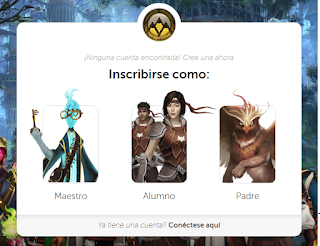The City Tour Project
by Andrés Chousal, Gabriel Estrada, Ayleen Gallardo, Nicole Lizama & Josefa Toledo
Context
Grade: 5th grade
Type of School: Public
N° students: 25
English Level: A1
Lesson 1 “The City”
Length: Each lesson 90 minutes
- Content Standard:
Ministerio de Educación, Chile.Idioma extranjero, Programa de estudio 5° básico.
Eje de aprendizaje: Reading and writing.
- Language Standards
Reading OA 5: Leer y demostrar comprensión de textos adaptados y auténticos simples no literarios, que contengan palabras de uso frecuente, familias de palabras, repetición de palabras y frases.
OA 6: Leer comprensivamente textos no literarios, como notas, postales, invitaciones, tarjetas de saludo, menús, recetas, diálogos, instrucciones o emails, identificando propósito del texto, ideas generales, información explícita, y palabras clave.
Writing OA 14 : Completar y escribir, de acuerdo a un modelo y con apoyo de lenguaje visual, textos no literarios con el propósito de compartir información en torno a los temas del año.
- Content Objective
By the end of this lesson, students will be able to:
Recognize key places in their city and how to ask and give directions.
- Language Objective
By the end of this lesson, students will be able to:
Use sentences to provide directions, such as: “turn left, turn right, go across the roundabout, go across the street”.
Apply vocabulary unit such as: “traffic lights, railway station, underpass, zebra crossing”.
Into: The teacher will hand a sheet of paper with the new vocabulary they will see throughout this unit. Then, students will talk with a partner about the places that appear in the sheet that can be found in their city and if they have been there. This sheet of paper contains a city map of Viña del Mar, so students have to work in pairs to find the places in the map, using the vocabulary and the sentences previously seen.
Through: Students will practice the new vocabulary seen in class through an activity designed by the teacher using the application Kahoot. Students will recognize the pictures and match it with the correct word in English.
Beyond: Later on, the teacher will hand over a cardboard and other materials needed for the next activity. Then in groups of five, they will create a piece of a city with one main street and two small ones. The group will choose three places they saw in the vocabulary (3 different places p/group) and they will locate them in the streets. Finally, they will add any other details to their maps, such as names, traffic lights and signs, trees, etc.
Strategy: students do Think-pair-share to identify the places of the map given by the teacher.
Materials: Sheet of paper, pencils, cell phones or tablets to play with Kahoot.
Lesson 2 “My City Map”
- Content Standard:
Eje de aprendizaje: speaking, reading.
- Language Standards
Speaking OA 12: Participar en diálogos con pares y profesores al realizar las siguientes funciones: dar instrucciones, identificar y describir lugares, dar información.
Writing OA 14 : Completar y escribir, de acuerdo a un modelo y con apoyo de lenguaje visual, textos no literarios con el propósito de compartir información en torno a los temas del año.
- Content Objective
By the end of this lesson, students will be able to:
Recognise key places in their city and how to ask and give directions.
- Language Objective
By the end of this lesson, students will be able to:
Use prepositions of place such as in front of, between, next to, behind, etc., in order to give directions.
Use Wh questions to ask for the direction or location of a place.
Through: A short video about prepositions of place will be displayed to the class. With this new content students will be asked short questions about directions and how to get to a particular place in their town. For example: Where is the bank? Finally, in the same groups, students will create a brochure containing the directions of their city’s main places.
The teacher will put a cardboard on the board and students have to write inside of the circle the prepositions of place learnt in the class.
Beyond: Once they finish their group maps, the teacher will ask for each map and then they will be pasted in one of the class wall. The idea is to try to create a small town with each map students created.
Strategy: Graphic organizer with prepositions of place.
Materials: A cardboard, markers, data projector, speakers.
Project Final Result: Using ICTs
- ICTs Objective
By the end of this project students will be able to:
Create videos related to tourist places in their city in order to transmit and share information.
Discriminate among information on the internet in order to choose the most suitable for their video creation.
Finally, students will make out of this activity something real by making a video related to their city. They will choose among different tourist places in order to use the content studied in the unit, such adjectives to describe these places and prepositions of place to give directions.

































